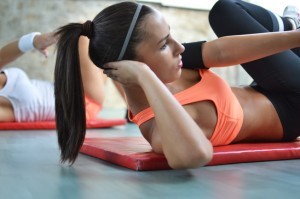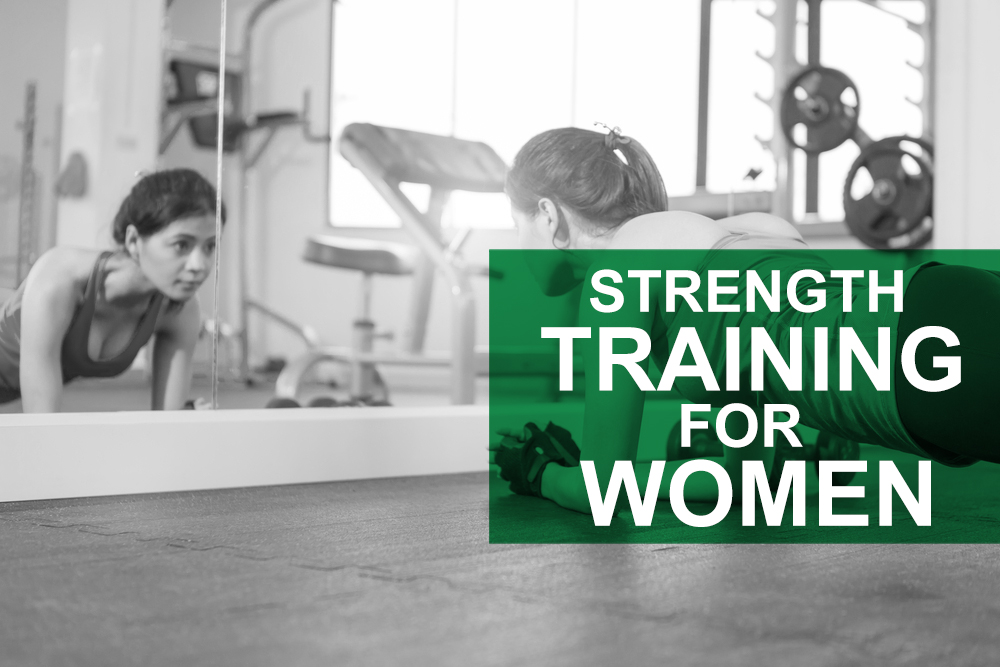Using strength training to aid weight loss
Personal trainer and fitness blogger Alexis Fletcher is back once again with more quirky insights into the world of health and fitness. This week Alexis uses strength training to aid weight loss!
“Many of my female clients complain of the usual hard to reach weight loss areas – legs, bums, tums and arms. But many still don’t understand how weight loss can be accelerated by performing the cardinal sin; weight lifting. Yes ladies, in order to lose weight, you too need to lift!
Most women fear the weight room, and for good reason. Often it is full of big bulky blokes, heavy weights and a stale stench of sweat. And why would you want to go in there? After all, it’s not like weight lifting benefits us girls is it? Oh how wrong you are! Many folk, particularly women hold onto the notion that weight loss and weight lifting are two separate entities; neither assisting the other. The actual truth however, is far from that often held belief.
Want the inside scoop? Weight lifting actually helps weight loss. Shock. Horror.

What’s all this nonsense?
It is a well-known fact that cardiovascular activity is instrumental in weight loss After all, nothing quite burns calories like hitting the pavement or the treadmill. The sheer amount of muscles engaged in sports such as running and swimming, both full body exercises will cause the body to burn a huge amount of calories in a relatively short amount of time. So why then, am I telling you to lift weights?
The answer is two-fold. Allow me to explain:
The afterburn effect
Not just the name of a cheesy 90’s direct-to-video movie, the afterburn effect is a state that occurs in the body following weight training.

When weight training is performed, or rather weight training in a circuit or super-set, the metabolism stays supercharged for up to three days. That boost can help you burn more calories for days following your session. Tie that in with your regular runs and clean diet and the result can be devastating for your fat stores.
A study by the New York Syracuse University found that over 48 hours super-sets increased the afterburn effect by up to 450kcals compared to regular training.
Performing a circuit of supersets – moving from one exercise to the next with no rest – increases the afterburn effect and also provides some of that much needed weight loss inducing cardiovascular training!
Muscle vs Fat
Fat is essentially stored tissue to be used as energy whenever needed. It doesn’t have a functional role in the body’s movement or exercise physiology. Muscle however needs calories in order to function. Without going too scientific about it, muscle requires calories and fat is stored calories. By increasing the amount of muscle on your frame, if only by a little, the body will in turn require more calories in order to function. And if you have fat to lose, one of the ways your body is going to go about powering the new found muscle is by using that stored fat. The great fat vs. muscle debate is, naturally, much more scientific than that but in a nutshell, gaining a bit of muscle will help you drop body fat quicker!
So how do I go about it?
The easiest way to perform a super-set circuit is to move from one muscle group to the opposing one. This means that the two muscle groups are constantly being worked either eccentrically or concentrically by having some form of resistance forced against them. For example, during a bicep curl, both the biceps and triceps work together; the bicep contracts and the tricep extends to stabilise the movement, in a tricep extension – the opposite occurs. In both contractions, the two muscle groups are constantly being used![2]
How do I train?
The simplest and most effective way to go about a circuit is through a full body workout. This is the most time effective way to train and helps you work all the major muscle groups, especially the core, in a variety of different ways.
Sample workout
Remember to move from one exercise to the next quickly – start by exercising for 40 seconds and resting for 20 seconds (1 minute) before moving onto the next exercise. As you get fitter (and firmer) you can decrease the rest time or increase the amount of time training overall!
Legs:
- Quads – Squat jump
- Glutes – Explosive lunge
- Calf – Body weight calf raise
- Hamstring – Seated leg curl
Upper body:
- Back – Assisted pull up
- Chest – Press up
- Biceps – Dumbbell curl
- Triceps – Tricep dip


